As the digital landscape continues to evolve, video has become one of the most powerful tools for online marketing.
Whether you’re an established brand or a newcomer, leveraging the right online video distribution platform can amplify your content’s reach and engagement.
But with so many platforms available, how do you choose the one that aligns with your goals?
In this guide, I’ll walk you through the top online video distribution platforms that have proven to be game-changers for businesses.
From large enterprises to small startups, these platforms provide the functionality needed to share, track, and optimize video content effectively.
I’ll also cover essential strategies to help you utilize these platforms to their fullest potential.
What is an Online Video Distribution Platform?
An online video distribution platform allows businesses to host, share, and promote video content across various channels.
These platforms range from social media sites to dedicated hosting services, each offering unique features tailored to different marketing needs.
A successful video distribution strategy goes beyond simply uploading videos.
It involves targeting the right audience, optimizing content for each platform, and analyzing performance to make data-driven decisions.
By choosing the right platform, you can increase brand visibility, engage with your audience, and ultimately drive conversions.
Top Online Video Distribution Platforms for 2025
Each platform offers specific features that can help enhance your video marketing strategy. Here’s a rundown of the most effective platforms to distribute your video content:
1. YouTube
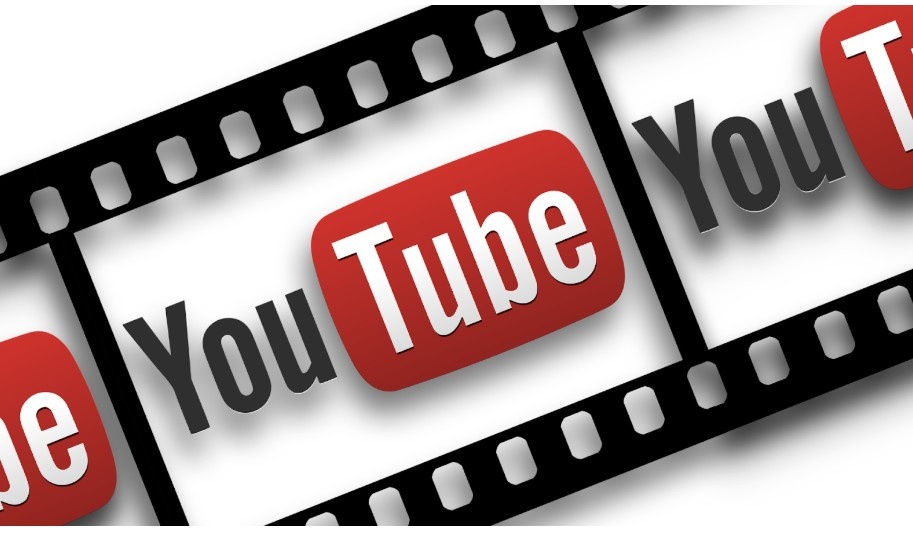
As the second-largest search engine in the world, YouTube is indispensable for businesses looking to reach a wide audience.
With billions of active users, it’s the go-to platform for video marketing.
Not only does YouTube help improve SEO, but it also allows for easy monetization and access to valuable analytics.
- Best For: Brand awareness, long-form content, tutorials, vlogs.
- Secondary Keywords: YouTube video marketing, video optimization.
2. Vimeo

Vimeo is known for its high-quality video hosting and customization options.
It’s ideal for businesses that want a professional look and feel for their video content.
Vimeo also offers detailed analytics and privacy controls, making it a top choice for B2B marketers.
- Best For: Professional video hosting, exclusive content, B2B marketing.
- Secondary Keywords: Vimeo for business, professional video hosting.
3. Instagram

Instagram is a visual powerhouse, and with features like Stories, Reels, and IGTV, it’s perfect for short-form content that captures attention quickly.
Instagram’s engagement rate is one of the highest, making it a great platform for building brand loyalty and connecting with younger audiences.
- Best For: Short-form content, influencer marketing, engagement with younger demographics.
- Secondary Keywords: Instagram Reels, social media video marketing.
4. Facebook

Facebook continues to be one of the most versatile platforms for video marketing.
With the ability to run paid video ads, host live streaming events, and share organic video content, Facebook is a one-stop shop for businesses to engage with a wide range of audiences.
- Best For: Paid video ads, live streaming, broad audience reach.
- Secondary Keywords: Facebook video ads, live streaming on Facebook.
5. LinkedIn

For B2B marketing, LinkedIn is the go-to platform. LinkedIn videos tend to perform well when it comes to professional content, thought leadership, and industry-specific insights.
It’s a great place to showcase product demos and company updates.
- Best For: Thought leadership, B2B engagement, professional content.
- Secondary Keywords: LinkedIn video strategy, professional video marketing.
6. TikTok

TikTok’s algorithm favors short, creative, and engaging videos, making it a great platform for viral marketing.
With a rapidly growing user base, it’s especially effective for businesses targeting younger demographics. TikTok videos can go viral quickly, offering massive reach for creative content.
- Best For: Viral marketing, creative content, Gen Z audience.
- Secondary Keywords: TikTok video marketing, viral video strategy.
7. Twitch

Image credit- twitch.tv
Twitch is best known for its live-streaming capabilities, particularly within the gaming community.
However, it’s also becoming increasingly popular for other industries, including lifestyle and entertainment. If your business has a strong online community, Twitch is a great way to engage in real-time.
- Best For: Live streaming, community engagement, gaming-related content.
- Secondary Keywords: Live streaming marketing, Twitch video content.
8. Twitter
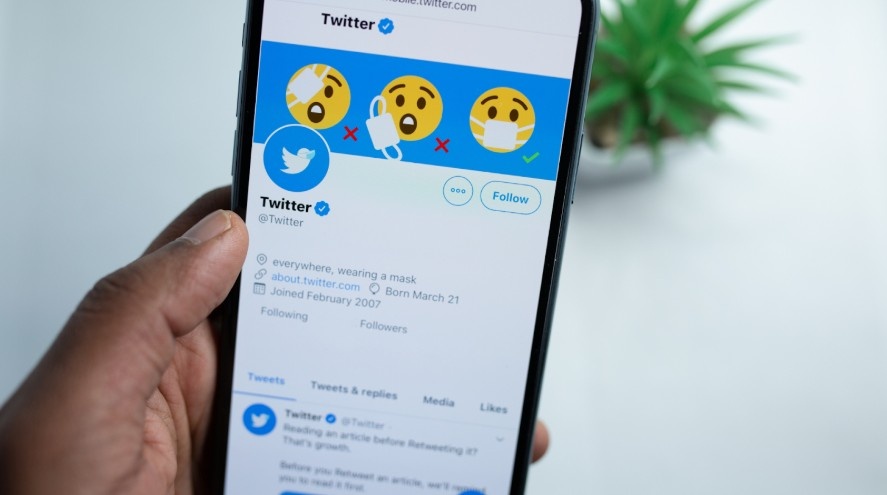
Twitter videos are short, engaging, and ideal for real-time updates, making it an excellent platform for news and announcements.
Twitter’s ability to foster quick conversations and immediate responses makes it an excellent choice for interactive video content.
- Best For: Quick updates, news, interactive content.
- Secondary Keywords: Twitter video strategy, social media video content.
9. Wistia
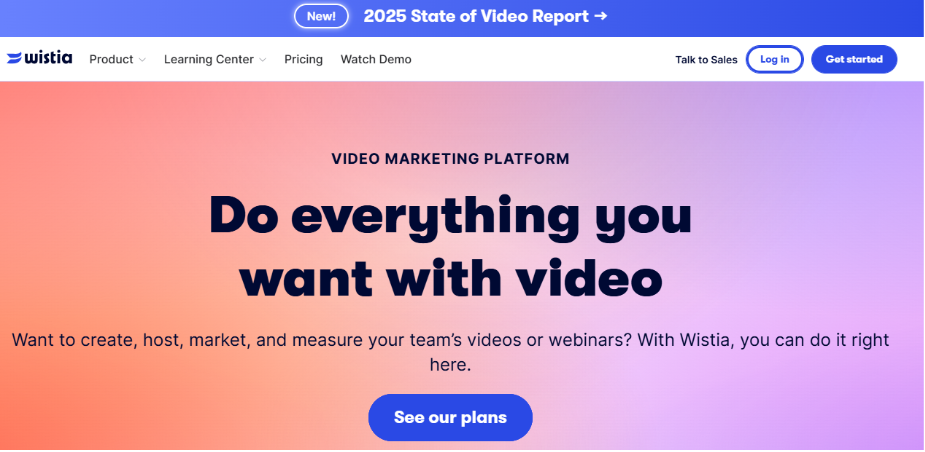
Image Credit- wistia.com
Wistia is a video hosting platform tailored for businesses. It provides tools for branding, lead generation, and detailed video analytics.
Wistia integrates well with marketing automation tools, making it ideal for nurturing leads through video content.
- Best For: Lead generation, video analytics, integration with marketing tools.
- Secondary Keywords: Wistia video hosting, lead generation through video.
10. Pinterest

Pinterest is more than just a platform for images—it’s an increasingly popular space for video content.
Users engage with video pins, and businesses can utilize Pinterest to drive traffic and boost conversions, particularly with visually appealing product videos.
- Best For: Product showcases, visually engaging content, traffic generation.
- Secondary Keywords: Pinterest video marketing, video pins.
11. Apple Music
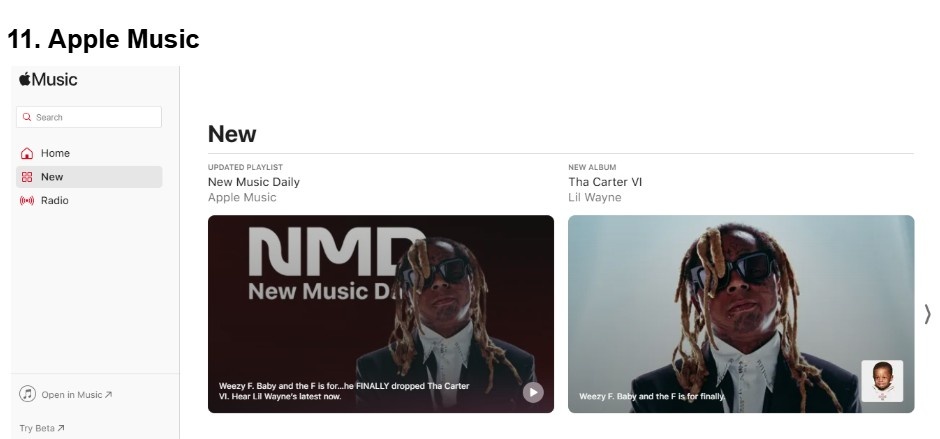
Image Credit- apple.com
While primarily a music streaming platform, Apple Music also supports video content, making it a good choice for musicians and entertainment brands to showcase music videos and exclusive content.
- Best For: Music videos, exclusive content, entertainment marketing.
- Secondary Keywords: Apple Music video strategy, music video distribution.
12. Dropbox Video Hosting
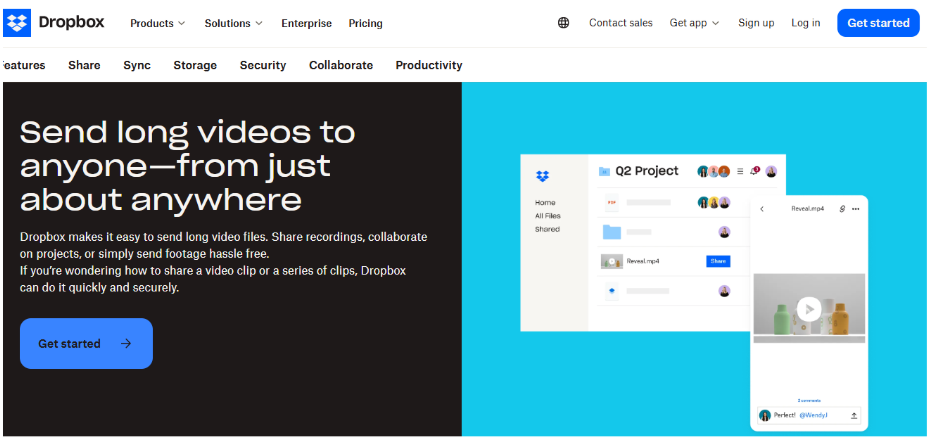
Image Credit- dropbox.com
Dropbox isn’t just for file storage; it can also be used to share video content. It’s particularly useful for businesses looking to share internal videos or collaborate with teams on video projects.
- Best For: Internal use, collaborative video sharing.
- Secondary Keywords: Dropbox video sharing, cloud video hosting.
13. Email

Email remains one of the most effective channels for video marketing. Adding videos to your email campaigns can significantly increase open rates, engagement, and conversions.
- Best For: Email marketing, product demos, tutorials.
- Secondary Keywords: Email video campaigns, video email marketing.
Best Practices for Video Distribution

Once you’ve selected your online video distribution platform, it’s time to ensure you’re using it effectively. Here are some best practices to keep in mind:
- Tailor Content to Each Platform: Customize your videos for the specific platform you’re using. For example, Instagram Reels require a different approach than YouTube videos, so consider the video length, format, and audience expectations.
- Optimize for SEO: Include relevant keywords in video titles, descriptions, and tags. This will help your videos show up in search results, driving more traffic and engagement.
- Leverage Paid Ads: Platforms like Facebook and YouTube offer paid ad options to boost video reach. Experiment with targeting options to ensure you’re reaching the right audience.
- Use Analytics: Regularly review your video performance metrics to see what works and what doesn’t. This will help you refine your video strategy and optimize for better results.
- Consistency is Key: Publish content consistently and engage with your audience. Regular video updates will help you build brand loyalty and keep your audience coming back for more.
Conclusion
Selecting the right online video distribution platform is a crucial step in maximizing the effectiveness of your video marketing efforts.
By understanding your business objectives and audience preferences, you can select the platforms that align with your strategy.
From YouTube and Vimeo to Instagram and TikTok, each platform offers distinct opportunities for distributing video content.
Remember, the key to successful video marketing is not just creating great content but also ensuring it reaches the right people at the right time.
By implementing the strategies and using the platforms discussed here, you’ll be on your way to building a strong, engaged audience and achieving your business goals.

